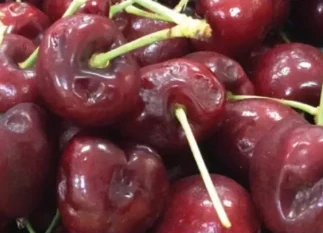Turkey is the world’s largest producer of cherries, while Chile is the leading exporter, making them more allies than competitors, as their seasons do not overlap.
Turkey has established itself as the top producer and one of the main exporters of cherries worldwide, with key markets in Europe, Russia, and Arab countries.
For the 2024–2025 season, Turkey’s leadership remains intact, although production is declining. According to the report *Stone Fruit: Markets and World Trade*, recently published by the United States Department of Agriculture’s Foreign Agricultural Service (USDA), global fresh cherry production is expected to rise slightly, reaching 5 million tons.
The world’s main cherry importers are China, Russia, the European Union, Canada, and the United States, while the top exporters are Chile, Turkey, the United States, and Uzbekistan, most of them located in the northern hemisphere.
Trends in Turkish Production
Although Turkey is experiencing favorable growing conditions, the exceptional weather and record yields seen last year are unlikely to be repeated.
As a result, Turkish cherry production is estimated to decline by 48,000 tons, totaling 900,000 tons.
However, strong demand from the European Union is expected to keep Turkish exports stable at around 85,000 tons, according to USDA data.
Allies, Not Competitors
Despite Turkey’s production decline, global cherry production is set to increase thanks to China, Chile, the European Union, and the United States.
Although Chile is approaching Turkey in production volumes, the two countries are complementary and are considered allies rather than rivals due to their differing harvest seasons.
In Turkey, the cherry season runs from May to September, thanks to the country’s diverse climates. In Chile, the season starts between October and November and extends until around February.
According to the USDA, Chile is the fourth-largest cherry producer globally, but the top exporter, with export volumes around five times higher than Turkey’s.
In the past decade, Chile’s cherry acreage and production have nearly quadrupled, while domestic consumption has only doubled.
Chile's Expansion
This growth has been made possible by the reduction in production of other lower-margin fruits, particularly apples and table grapes, as many fields have been converted to cherry cultivation, the USDA explains.
The first estimate from the Comité de Cerezas de Frutas de Chile forecasts exports of 131,587,007 5-kg boxes this season, equivalent to 657,935 tons—a record high for Chilean exports.
China
China and Chile are central players in the global cherry trade. Between the 2019–2020 and 2023–2024 seasons, Chinese cherry imports rose from 230,000 to 388,000 tons.
Chilean exports of fresh cherries have quadrupled in ten years, with around 90% of volumes shipped to China, making Chile a key off-season supplier for the Chinese market.
The USDA report highlights that Chilean cherry exports account for about half of global cherry trade in the 2023–2024 season, totaling over 375,000 tons.
With Chilean production and Chinese demand expected to rise, this commercial relationship will remain a key driver of the global cherry market.
According to the USDA, global cherry exports are projected to reach 759,000 tons, nearing last season’s record high.
In China, both production and imports are forecast at 850,000 and 415,000 tons respectively.
Regional Outlook in China
China’s Shandong province, the main production area, experienced drought this year, but other regions have seen area expansion and favorable weather, supporting steady growth.
As a result, Chinese cherry production is expected to increase by 50,000 tons, reaching 850,000 tons.
Thanks also to the increased supply from Chile and the United States, imports are forecast to rise by 7%, reaching 415,000 tons.
In recent years, China’s fresh cherry production has steadily increased, reaching 800,000 tons in the 2023–2024 season (April 2023 to March 2024), yet still falls short of meeting internal demand.
Chilean cherries are available in China from December to February, offering off-season supply during the peak demand for Chinese New Year.
The United States is China’s second-largest cherry supplier, but its market share is limited by high tariffs and competition from China’s domestic production.
Europe
Frost damage has prevented Poland from fully recovering from last season’s setbacks, keeping EU cherry production at around 715,000 tons—an increase of just 10,000 tons.
With higher production and imports, cherry consumption in the European Union has more than doubled over the past six years and is expected to reach 1.3 million tons in the 2024–2025 season.
Imports are also expected to rise slightly, reaching 60,000 tons—the highest level in the past 17 years.
Exports, meanwhile, are forecast to grow by 3,000 tons to 15,000 tons, although still below the five-year average, according to the USDA.
United States
Despite frost damage in Washington State orchards, U.S. cherry production is expected to increase by 13,000 tons, reaching a total of 413,000 tons.
Sour cherry production in Michigan is also on the rise, but concerns remain over quality due to a hot, rainy summer and pest issues.
U.S. exports are expected to grow slightly to 85,000 tons, surpassing the ten-year average.
Imports will remain steady at 20,000 tons. However, former President Donald Trump’s tariff policies could influence these forecasts.
Text and images source: valenciafruits.com
Alba Campos
Valencia Fruits Editorial Team
Cherry Times – All rights reserved












